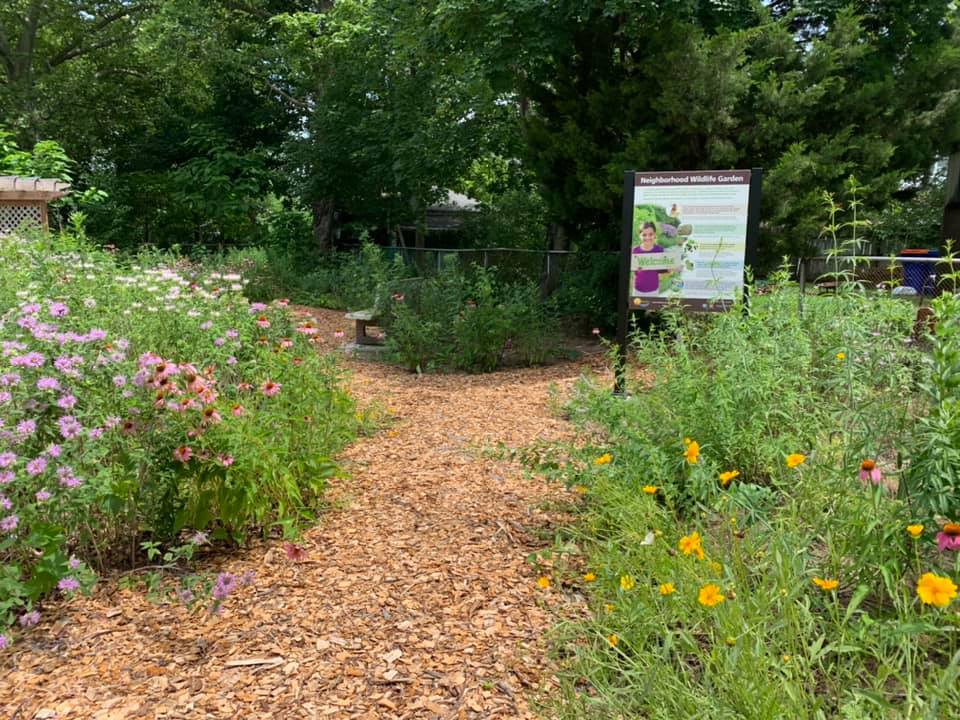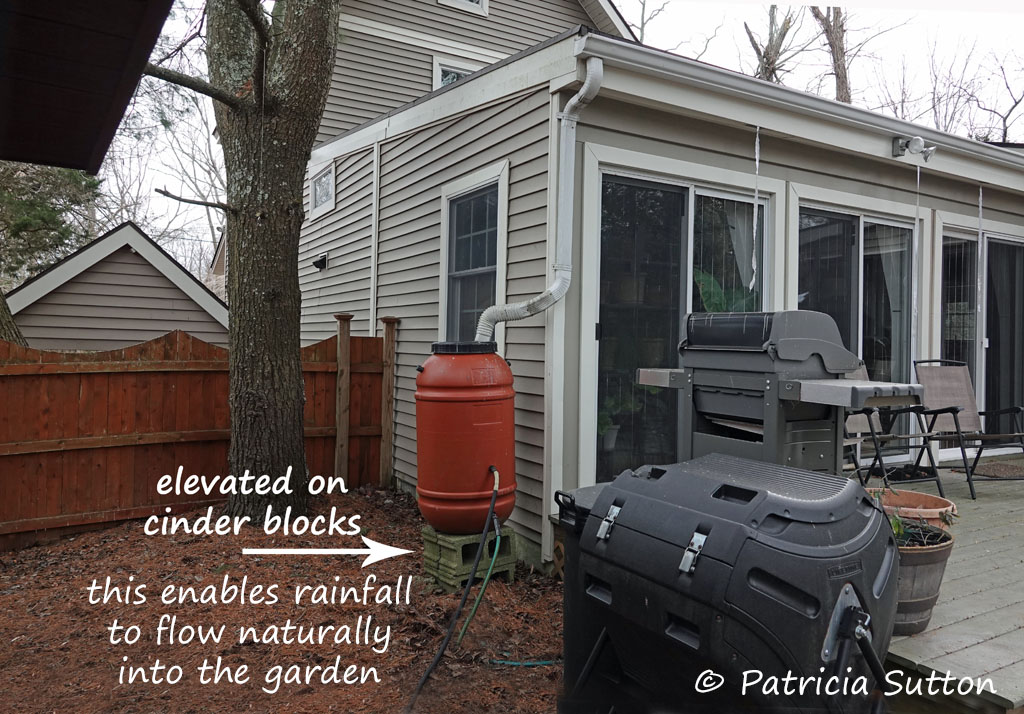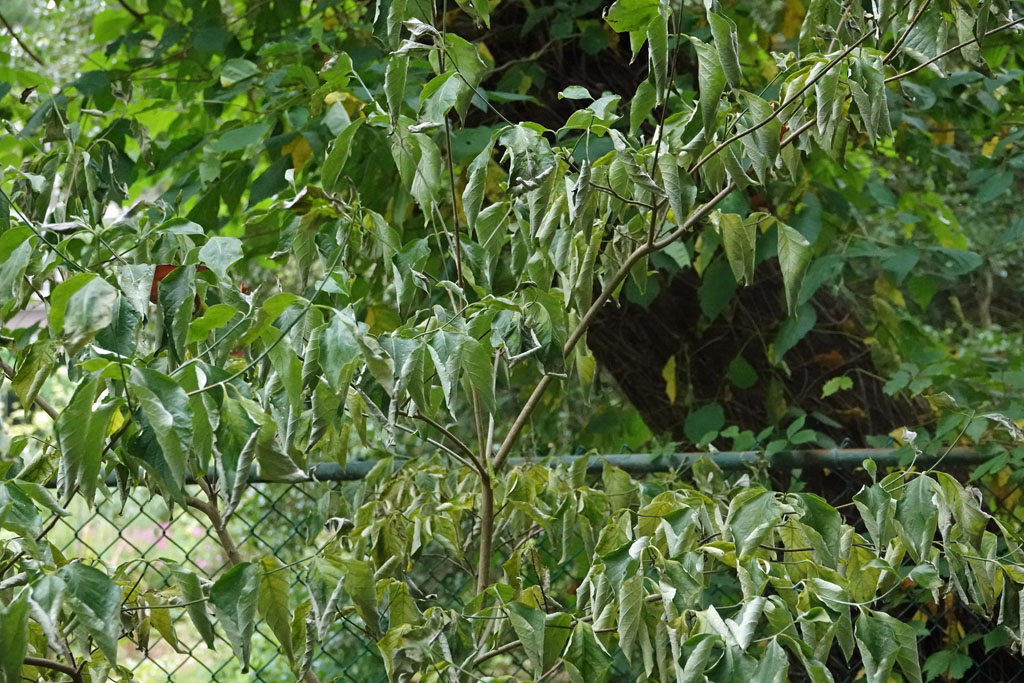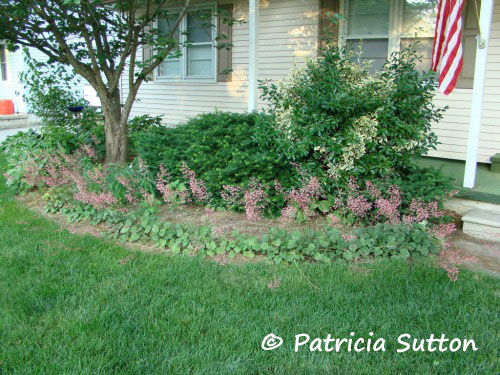Hi Gang,
 If any of you maintain a wildlife garden, keep bees, or garden organically here in Cape May County, New Jersey, where spraying for mosquitoes occurs, you might want to call and tell the Cape May County Department of Mosquito Control that you do not want your property sprayed.
If any of you maintain a wildlife garden, keep bees, or garden organically here in Cape May County, New Jersey, where spraying for mosquitoes occurs, you might want to call and tell the Cape May County Department of Mosquito Control that you do not want your property sprayed.
In 2009 I called and told them that I did not want my property sprayed (a half-acre wildlife garden & habitat full of native plants, birds, pollinators, and other wildlife). Since then I have been on their “NOTIFICATION LIST” (“NO SPRAY LIST”) and they notify me when my neighborhood in Goshen, NJ, is going to be sprayed.
Being a long-time wildlife gardener with a yard free of herbicides, pesticides, and other hazards, I wish to keep my property that way . . . free of any killing agents, and safe for pollinators, all wildlife, and me!
Neighbors and fellow wildlife gardeners are often completely unaware that spraying is occurring. As you read on you’ll understand why (the spraying is done at night). If you live in Cape May County, reach out today to get your property on the “NOTIFICATION LIST” (“NO SPRAY LIST”) so it remains a safe haven and not an ecological trap:
Cape May County Department of Mosquito Control
609-465-9038
(Monday through Friday, 7:00 am to 3:00 pm)
Ask to be put on their “Notification List” (“No Spray List”)
Or you can contact Kyle Rossner, their Entomologist, and he would be happy to add you to the list and answer any questions or concerns. Kyle Rossner can be reached at 609-465-9038, x-3909; [email protected]
Be ready to provide:
- your name
- snail mail address (street address)
- e-mail address (so they can notify you when spraying needs to be done in your town)
If you have called previously to be put on the “Notification List” (“No Spray List”), you will remain on this list indefinitely, unless you choose to be removed from the list by calling the Cape May County Department of Mosquito Control.
(Those of you who live in other counties, where mosquito spraying also occurs, can call your county mosquito department too.)
This year, 2022, we had substantial rains in June. But July through early August most areas have received very little rain.
As of this writing, August 3rd, the next scheduled spraying will occur Thursday, August 4, and/or Friday, August 5, 2022, between the hours of Midnight and 7:00 am, when mosquitoes are flying and when diurnal pollinators like bees and butterflies are not flying. Portions of the following municipalities may be sprayed: Wildwood, West Wildwood & Wildwood Crest, Diamond Beach & Cold Spring in Lower Township, US Coast Guard Base in Cape May, and West Cape May.
The Department will use Aqua Reslin, trade name for permethrin, and/or Aqua Anvil / Anvil 10+10, trade names for sumithrin, and/or Duet / Aqua Duet, trade names for prallethrin and sumithrin, and/or Zenivex / Aqua Zenivex, trade names for etofenprox, applied as ultra-low volume aerosols.
To keep abreast of spray notifications, click HERE. Notifications are taken down shortly after the spray date(s), so check regularly (at least weekly).
Each time I receive a spray notification I go through the formal channels to learn where the spraying will occur and if it will be on my street. I learn that it will be (or was) on “such and such a street” (because complaints were called in from there). So if one of your neighbors has just moved to Cape May County and is unaware of our biting insects (Hey: we live in an area where mosquitoes and other biting insects are part of the landscape . . . salt marshes, freshwater marshes, and wet woods), and this neighbor calls in to complain, your neighbor’s property and the street it is on may get put on the map of places to be sprayed. Spraying is often in response to complaints (plus subsequent site visits, sampling, and testing by the Cape May County Department of Mosquito Control).
Imagine if the Cape May County Department of Mosquito Control heard from all of us who DO NOT want our properties sprayed!
Kyle Rossner explained that heavy rain will never prompt an adult mosquito treatment, but rather lead to a sharp increase in mosquito populations, which (depending on the month and more importantly the mosquito species) could lead to an increase in mosquito-borne pathogens cycling in the local mosquito populations. The proven presence or increased risk factors for these pathogens is what triggers spraying for adult mosquitoes.
 An increase in mosquitoes in our own yard is made up almost entirely by Asian Tiger Mosquitoes, the tiny black and white striped (body and legs) mosquitoes. They are hard to ignore since they are most active during the day (a day biter) and unusually aggressive. And this mosquito’s abundance is the result of you and I, not the environment. When unknowing residents leave shallow dishes under pots, buckets that are not overturned, and other items that can collect rain water (water barrels, discarded tires, rain gutters, even discarded cups with water in them are used as breeding sites) then Asian Tiger Mosquitoes multiply and thrive. Their eggs are tolerant of and survive periods of drought.
An increase in mosquitoes in our own yard is made up almost entirely by Asian Tiger Mosquitoes, the tiny black and white striped (body and legs) mosquitoes. They are hard to ignore since they are most active during the day (a day biter) and unusually aggressive. And this mosquito’s abundance is the result of you and I, not the environment. When unknowing residents leave shallow dishes under pots, buckets that are not overturned, and other items that can collect rain water (water barrels, discarded tires, rain gutters, even discarded cups with water in them are used as breeding sites) then Asian Tiger Mosquitoes multiply and thrive. Their eggs are tolerant of and survive periods of drought.
Kyle Rossner does site visits when complaints are called in to the Cape May County Department of Mosquito Control. In my yard he spotted some saucers under flower pots and educated me, sharing that the sneaky female Asian Tiger Mosquito lays her eggs in likely sites (even sites that are bone dry), and when it rains and these containers fill, her eggs are already there, hatch, and in an as little as 7 days during hot summer stretches these eggs can produce countless flying, biting, persistent, and annoying adult Asian Tiger Mosquitoes. I should know. My neighbor is a collector of “stuff.” His yard is brim full of sites where they can breed and there are times we have a hard time enjoying our wildlife garden because of the swarms of Asian Tiger Mosquitoes produced next door. Despite this, I still do not want my property sprayed. I do want my neighbor to be educated, though.
Several years ago my friend and fellow wildlife gardener Keith Parker had some “Do Not Spray, Pollinator Garden” signs made. Keith, myself, and others display this sign prominently along the street in front of each of our properties, not only for the spray trucks to clearly see, but also for neighbors who may be calling to have their property sprayed and not thinking about the consequence to pollinators (and us). I believe Keith has given away all the signs he had made, but you can find some fun “Do Not Spray” signs for sale on ETSY HERE and at the Tallgrass Prairie Center’s Website HERE .
Happy Wildlife Gardening,
Pat


 Today, Pat is a free-lance writer, photographer, naturalist, educator, lecturer, tour leader, and wildlife habitat/conservation gardening educator.
Today, Pat is a free-lance writer, photographer, naturalist, educator, lecturer, tour leader, and wildlife habitat/conservation gardening educator.






















































